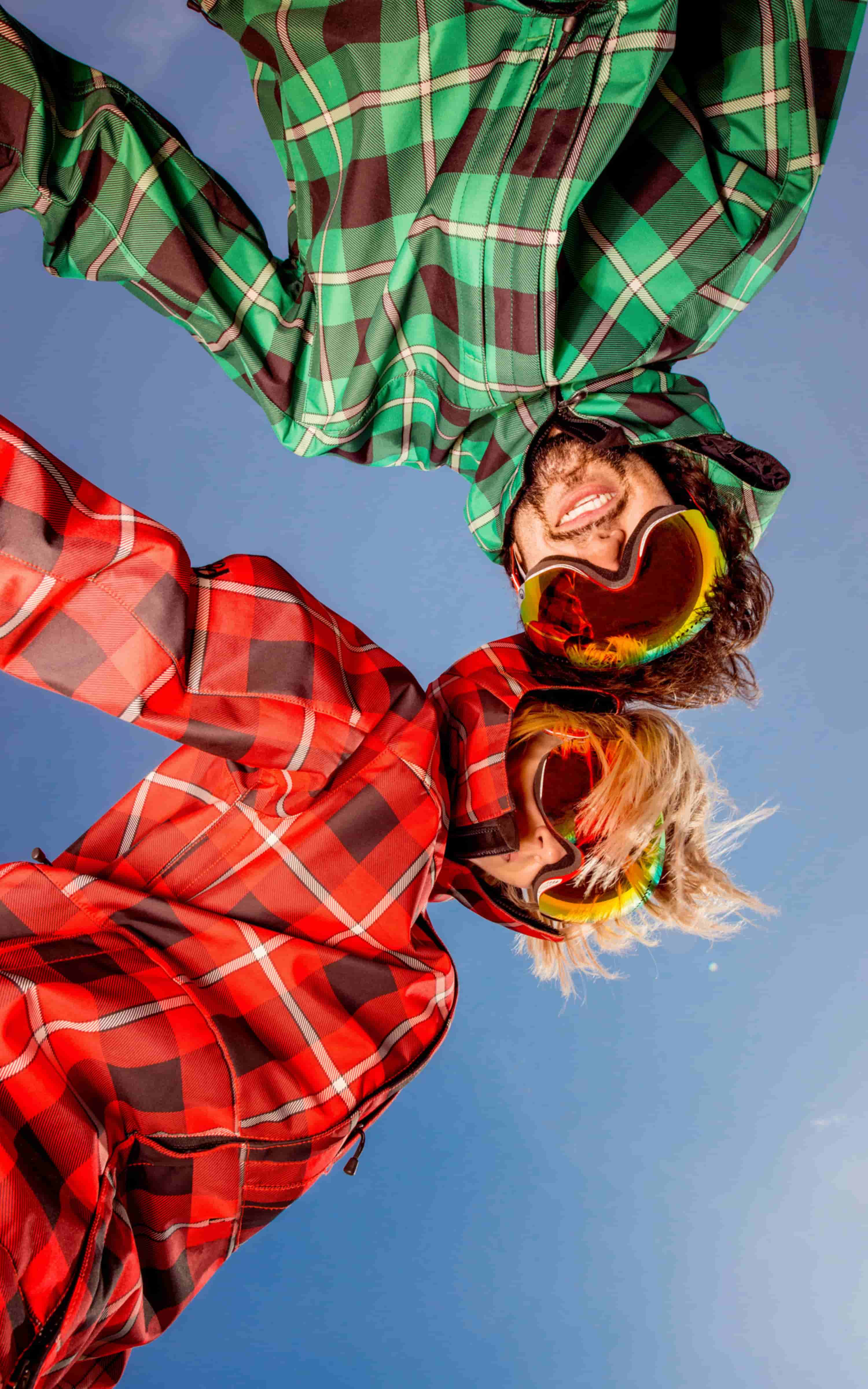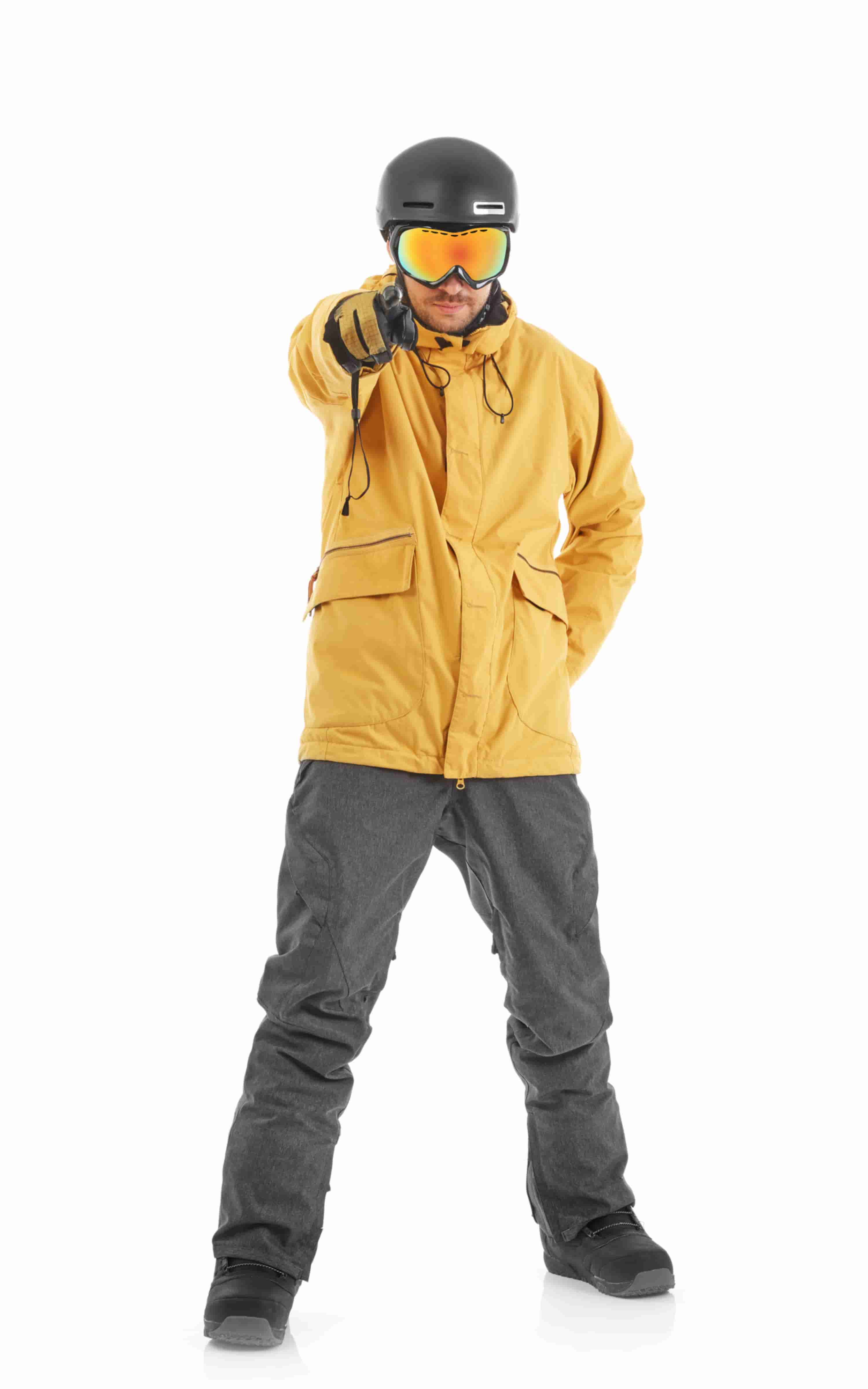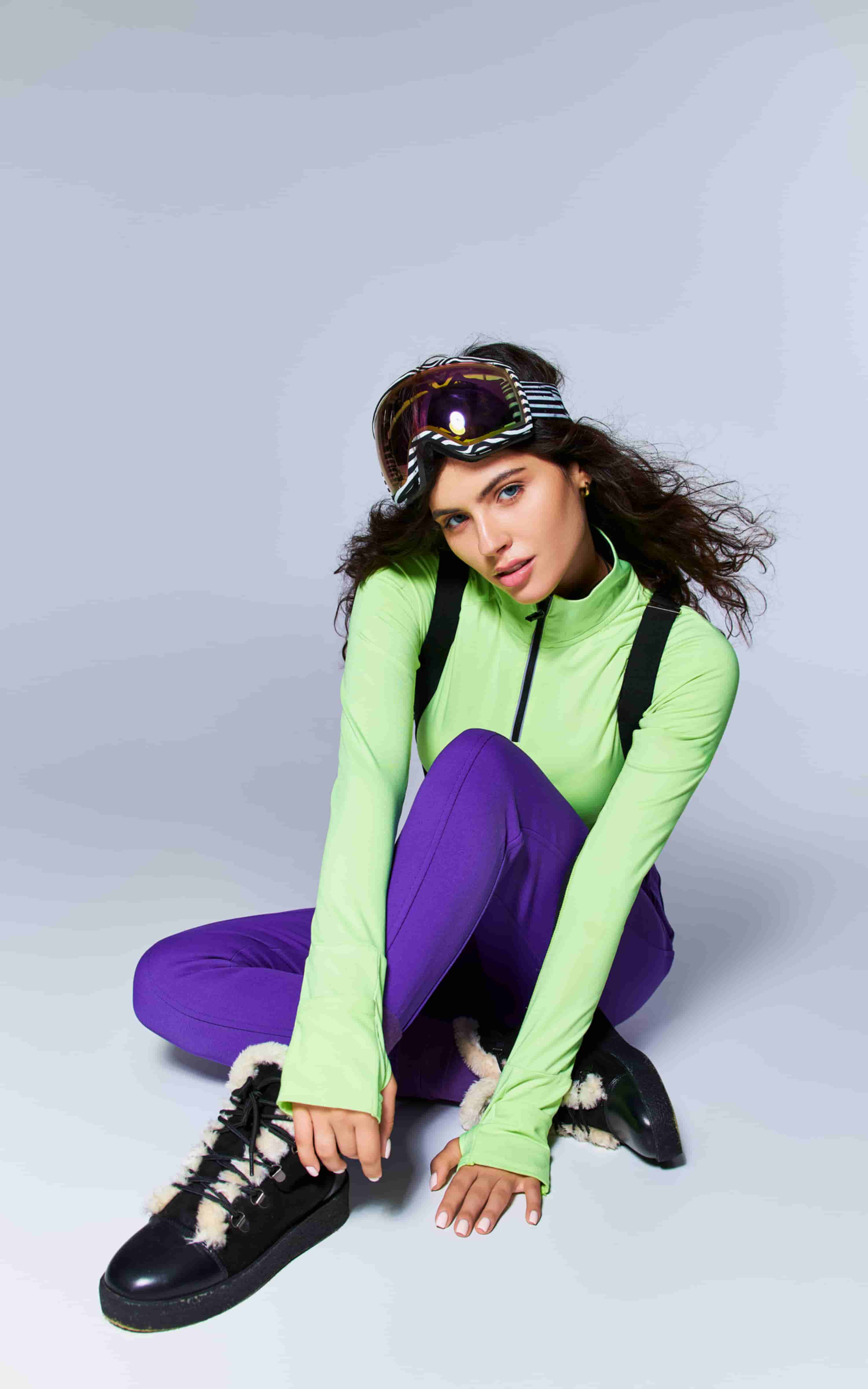

The base layer is crucial for wicking away moisture from your skin and keeping you dry. This layer should be made of a moisture-wicking material such as merino wool or synthetic fabric. It should fit snugly against your skin without being too tight, allowing for proper ventilation and mobility. The insulating mid-layer provides warmth and helps regulate your body temperature. This layer can vary depending on the weather conditions, but popular options include fleece jackets or down vests. The key is to choose a mid-layer that is breathable and lightweight so that you can easily adjust your temperature as needed.
This layer should be waterproof and windproof to keep you warm and dry in any conditions. Look for ski jackets with features such as adjustable hoods, powder skirts, pit zips, and taped seams to ensure maximum protection. In addition to these three main layers, accessories such as gloves, hats, neck gaiters, and socks are also important for staying comfortable while skiing. Be sure to choose materials that are moisture-wicking and insulated to keep your extremities warm and dry. By following this ideal layering system for skiing, you can stay comfortable and perform at your best on the slopes.
With the right gear, you'll be able to focus on enjoying the thrill of skiing without being hindered by discomfort or cold temperatures. What is the most important accessory for a ski outfit? When hitting the slopes, one of the most important accessories for a ski outfit is undoubtedly a good pair of gloves. Skiing can be a cold and wet sport, so having proper protection for your hands is crucial to ensure an enjoyable experience on the mountain. Not only do gloves keep your hands warm in freezing temperatures, but they also provide essential grip and dexterity when navigating through challenging terrain or adjusting equipment.
Without proper gloves, your fingers could quickly become numb and lose their ability to function effectively, putting you at risk of injury or discomfort. In addition to warmth and functionality, a quality pair of ski gloves should also offer waterproof and breathable properties to keep your hands dry and comfortable throughout the day. Wet gloves can lead to chafing, blisters, and even frostbite in extreme conditions, so it's important to invest in a pair that can withstand the elements. Furthermore, some ski gloves come with added features such as wrist straps, insulation layers, touchscreen compatibility, and reinforced palms for extra durability.
Overall, while there are many accessories that can enhance your ski outfit, a good pair of gloves should be at the top of your list. They not only keep you warm and dry but also improve your performance on the mountain by allowing you to maintain control over your equipment. So next time you head out for a day on the slopes, don't forget to pack a reliable pair of ski gloves – your hands will thank you!
When it comes to hitting the slopes during winter, having the right gear is essential to ensure a comfortable and enjoyable experience. One key piece of equipment that can make all the difference in keeping you warm and dry is your outerwear. Ski jackets and snowboard jackets are two popular options for winter sports enthusiasts, but what exactly sets them apart?
One of the main differences between ski jackets and snowboard jackets lies in their design and functionality. Ski jackets are typically more streamlined and form-fitting, with a focus on mobility and flexibility to accommodate the range of motion needed for skiing. They often feature a longer cut at the back to provide extra coverage while bending forward during skiing. On the other hand, snowboard jackets tend to be baggier and longer in length to allow for a more relaxed fit that complements the snowboarding style. Snowboarders often prefer looser outerwear that allows for greater freedom of movement when performing tricks or jumps on the slopes. Another key difference between ski jackets and snowboard jackets is in their features.
They may also have vents under the arms or on the sides to help regulate body temperature during intense physical activity. Snowboard jackets, on the other hand, often come equipped with extra padding or reinforcements in high-impact areas such as elbows, shoulders, and wrists to protect against falls while riding. They may also have specialized pockets or loops for attaching equipment like helmets or gloves. In terms of style and aesthetics, ski jackets tend to be more classic and understated in design, with solid colors or simple patterns that appeal to a wider range of skiers. Snowboard jackets, on the other hand, often feature bold graphics, bright colors, and unique prints that cater to the more fashion-forward aesthetic preferred by many snowboarders.
Both types of outerwear offer protection from cold temperatures and wet conditions, so it's important to consider factors like fit, features, and style when making your decision. Whichever option you go with, investing in quality outerwear designed specifically for winter sports will help you stay warm, dry, and comfortable so you can focus on enjoying your time on the slopes. So whether you're carving down snowy mountainsides on skis or shredding fresh powder on a snowboard, make sure you're properly equipped with the right jacket for your chosen winter sport. What is the best material for ski pants? When it comes to choosing the best material for ski pants, there are a few key factors to consider.
The best material for ski pants should be waterproof, breathable, durable, and flexible enough to allow for freedom of movement on the slopes. One of the most popular materials used for ski pants is Gore-Tex. Gore-Tex is a high-performance fabric that is both waterproof and breathable, making it ideal for skiing in wet or snowy conditions. This material is also highly durable and abrasion-resistant, which means it can withstand the wear and tear of frequent skiing trips. Additionally, Gore-Tex is known for its flexibility, allowing skiers to move freely without feeling restricted by their pants.

Another great option for ski pants is softshell fabric. Softshell fabric offers a good balance between warmth and breathability, making it suitable for a variety of weather conditions. While not as waterproof as Gore-Tex, softshell fabric can still provide protection from light rain or snow showers. Softshell pants are also lightweight and stretchy, making them comfortable to wear while skiing. For those looking for maximum warmth on the slopes, insulated ski pants are another great option.
These materials trap heat close to the body while still allowing moisture to escape, keeping you warm and dry throughout your day on the mountain. In conclusion, when choosing the best material for ski pants, it's important to consider factors such as waterproofness, breathability, durability, flexibility, and insulation. Whether you prefer the performance of Gore-Tex, the versatility of softshell fabric, or the warmth of insulated materials – there is a wide range of options available to suit your skiing needs. Ultimately, finding the right pair of ski pants will help enhance your comfort and performance on the slopes so you can focus on enjoying your time in the mountains.
As a passionate skier, I can confidently say that there is one must-have item in every skier's wardrobe: a high-quality ski jacket. A good ski jacket is essential for staying warm, dry, and comfortable on the slopes, no matter what the weather conditions may be. When it comes to choosing a ski jacket, there are several important factors to consider. First and foremost, the jacket should be waterproof and breathable to protect you from snow, wind, and moisture while allowing sweat to escape.
Look for jackets with sealed seams and durable water repellent (DWR) coatings for extra protection. In addition to being weather-resistant, a good ski jacket should also provide insulation to keep you warm in cold temperatures. Many jackets come with built-in insulating materials such as down or synthetic fill, or have zip-in liners that can be added or removed depending on the temperature. Another important feature to look for in a ski jacket is ventilation options. Skiing can be an intense physical activity, and having vents that open up to release excess heat can help regulate your body temperature and prevent overheating. Finally, consider practical details such as pockets for storing essentials like goggles, gloves, and snacks, as well as features like adjustable hoods, cuffs, and hemlines for a personalized fit.
With the right jacket in your wardrobe, you'll be prepared for whatever Mother Nature throws your way during your skiing adventures. What is the perfect apres-ski outfit? After a long day of hitting the slopes, there's nothing better than unwinding and relaxing in the perfect apres-ski outfit. The ideal ensemble strikes a balance between style and comfort, allowing you to transition seamlessly from the mountain to the après scene. First and foremost, warmth is key when it comes to dressing for apres-ski activities.

A cozy knit sweater or fleece pullover is a must-have layer to keep you snug as you sip on hot cocoa or enjoy some après-ski snacks. Pair this with insulated leggings or thermal pants to ensure that you stay warm while still looking stylish. When it comes to footwear, opt for a pair of sturdy snow boots that can easily navigate snowy terrain. Not only will they keep your feet dry and warm, but they also add a touch of practicality to your outfit. Don't forget to bring along a pair of thick socks for added insulation.
A chunky knit beanie or pom-pom hat will keep your head warm while adding a playful touch to your outfit. Consider investing in a cozy scarf or neck gaiter to protect yourself from cold winds. As for outerwear, choose a chic puffer jacket or parka that combines both style and functionality. Opt for one with plenty of pockets so you can easily store essentials like lip balm, hand warmers, or snacks.
Finish off your look with a statement piece like a faux fur coat or brightly colored ski jacket for an extra pop of personality. Overall, the perfect apres-ski outfit should be comfortable, practical, and stylish all at once. By choosing pieces that prioritize warmth and functionality while still reflecting your personal style, you'll be ready to hit the town after a day on the slopes feeling confident and cozy. How to Layer for Warmth and Style on the SlopesWhen hitting the slopes, it's important to not only stay warm but also look stylish. Layering your clothing correctly can help you achieve both of these goals. The key to layering for warmth and style on the slopes is to start with a base layer that is moisture-wicking and breathable.
Look for base layers made of materials like merino wool or polyester blends. On top of your base layer, add an insulating layer such as a fleece or down jacket. This will provide extra warmth without adding too much bulk. Make sure your insulating layer fits well and allows for freedom of movement. For outerwear, choose a waterproof and windproof jacket and pants to protect you from the elements.

Pair a green ski jacket with black or dark green ski pants. For a cohesive look, choose green-tinted goggles and black gloves.
Trendy ski outfits for women include matching ski jackets and pants in bold colors, like red or blue, paired with stylish accessories such as beanies, goggles, and gloves.
Black ski outfits are versatile and can be paired with any color. Bright colors like red, yellow, or neon green for accessories create a striking contrast.